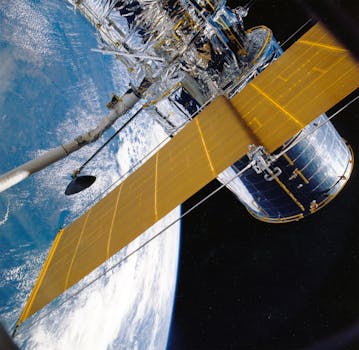
The Rise of Mega-Constellations: Latest Updates in Satellite Telecommunications
The rise of mega-constellations is a significant development in the satellite telecommunications industry, with thousands of small satellites being launched into orbit to provide global internet connectivity. Mega-constellations, also known as satellite constellations, refer to a large group of satellites that work together to provide a specific service, in this case, broadband internet access. The focus keyword Mega-Constellations is an essential aspect of this article, as it represents the latest updates in satellite telecommunications.
The concept of mega-constellations has been around for several years, but it has gained significant traction in recent times, with several companies, including SpaceX, OneWeb, and Amazon’s Kuiper Systems, launching their own satellite constellations. These constellations are designed to provide high-speed, low-latency internet connectivity to remote and underserved areas, where traditional fiber-optic cables are not feasible.
How Mega-Constellations Work
Mega-constellations work by launching a large number of small satellites into low Earth orbit (LEO), typically at an altitude of around 500-1,200 km. These satellites are designed to be compact, lightweight, and relatively inexpensive, making them ideal for mass production and launch. Each satellite is equipped with advanced communication technology, including antennas, transponders, and propulsion systems, which enable them to communicate with each other and with ground stations.
The satellites in a mega-constellation work together to provide a continuous, uninterrupted service, with each satellite serving as a node in the network. Data is transmitted from one satellite to another, and then to a ground station, where it is processed and transmitted to its final destination. This architecture enables mega-constellations to provide a high degree of redundancy and fault tolerance, ensuring that the network remains operational even if one or more satellites fail.
Benefits and Challenges of Mega-Constellations
The benefits of mega-constellations are numerous, including the ability to provide global internet connectivity, bridging the digital divide between urban and rural areas. Mega-constellations can also provide backup connectivity during natural disasters or outages, and enable the creation of new services, such as satellite-based IoT (Internet of Things) networks.
However, mega-constellations also pose significant challenges, including the risk of space debris, interference with other satellite systems, and the potential for cyber attacks. Additionally, the launch and operation of thousands of satellites require significant resources, including funding, personnel, and infrastructure.
Latest Updates and Developments
Several companies are currently launching and operating mega-constellations, with SpaceX’s Starlink being one of the most prominent examples. Starlink has already launched over 1,000 satellites into orbit and plans to launch thousands more in the coming years. OneWeb has also launched its own satellite constellation, with a planned total of 648 satellites. Amazon’s Kuiper Systems has received approval from the FCC to launch a constellation of 3,236 satellites.
The development of mega-constellations is also driving innovation in space technology, including the creation of new propulsion systems, advanced materials, and more efficient communication protocols. The use of artificial intelligence and machine learning is also becoming increasingly important in the operation and management of mega-constellations.




